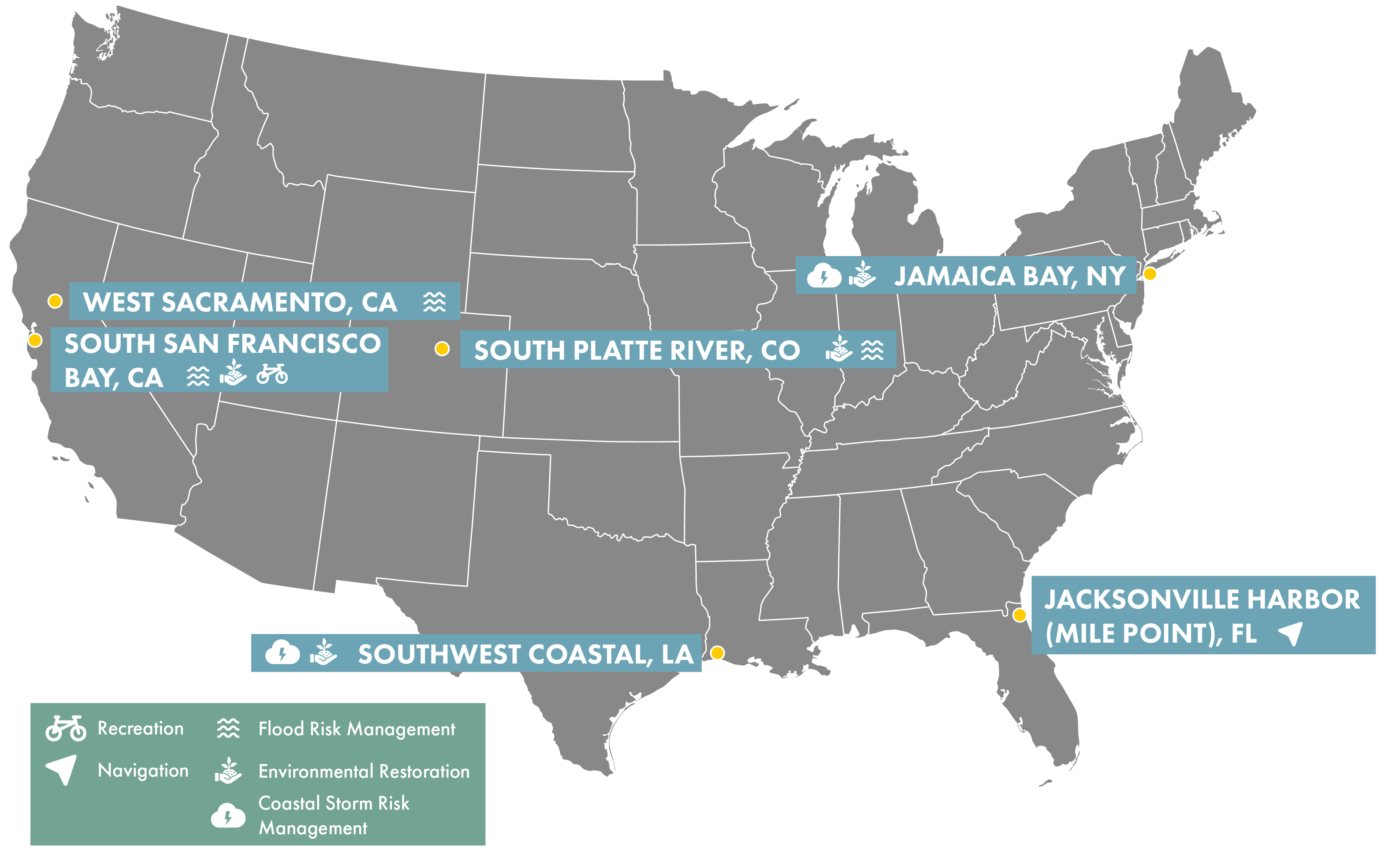U.S. Army Corps of Engineers' Engineering With Nature® Initiative
Enhancing Benefits Evaluation for USACE Water Resources Projects
Ongoing
The Challenge
Currently, the benefit-cost analysis (BCA) places a substantial emphasis on the dollar value of the properties a proposed project would protect. However, the science of quantifying the environmental and social costs and benefits of nature-based solutions has drastically improved over the years, and if applied, could provide a more complete assessment of how such nature-based solutions complement and enhance traditional infrastructure projects. This applied policy research project considered how to best quantify, and potentially monetize, the full range of economic, environmental, and social costs and benefits that nature-based solutions provide. Specific consideration was given to instances in which nature-based solutions are strategically designed to work with conventional approaches using rock, concrete, and steel.
The Approach
The USACE EWN® Initiative selected The Water Institute to analyze existing policies and provide guidance on improving federal practice around the country to better consider the economic, environmental, and social benefits of nature infrastructure and nature-based solutions.
The Water Institute team worked with the USACE to identify and evaluate a number of completed Chief’s Reports to determine if there is an opportunity to further quantify the environmental and social costs and benefits of proposed nature-based solutions, including factors that may have contributed to prioritization of conventional over natural infrastructure as well as benefits that may not have been fully captured by the current approach.
Based on insights gathered in analyzing the selected Chief’s Reports, The Water Institute performed a policy analysis of the environmental and social costs and benefits that might have been further quantified and determine how that would have impacted the BCA. As part of this effort, The Water Institute organized an Engineering With Nature Technical Review Summit in Washington, D.C. to bring together government, nonprofit, academic and private sector collaborators to contribute to the effort.
In late 2022, more than 1,000 people attended the “Measuring What Matters: Toward a More Comprehensive and Equitable Evaluation of Benefits Summit,” either virtually or in person. The Summit brought together government, nonprofit, academic, and private sector collaborators to share recent progress and identify key next steps for the comprehensive evaluation and planning of civil works projects.
The Capstone Report for this first phase of work was released in June 2023.

Next Steps
The Water Institute, with partners at USACE ERDC, will be using this work, along with feedback and input from the Summit, to advance EWN concepts in implementation. These next steps include:
Considering equity and environmental justice in USACE project evaluation and prioritization. There is a recognized need to expand current efforts for inclusion of equity and environmental justice into civil works decisions and promote the implementation of Justice40 and related administration priorities.
Accelerating integration of natural and nature-based engineering into USACE Civil Works’ Flood Risk Management mission. The Water Institute will be working with the ERDC and other USACE groups to develop an implementation plan to accelerate the integration of Engineering With Nature. The implementation plan will identify and develop strategic goals, objectives, challenges, and outcomes for evaluating and incorporating EWN principles into each phase of flood risk management projects.
Quantifying climate change mitigation potential of nature-based carbon sequestration and storage in U.S. Department of Defense lands. DoD operates on more than 25 million acres of land and water and nearly 5,000 sites in different regions, climates, and landscapes in the U.S., U.S. territories, affiliated states, and around the world. The Water Institute will work with USACE ERDC to develop a research plan that would help quantify carbon sequestration potential and develop a database of the carbon sequestration ability of various habitats that exist on DoD lands.
























